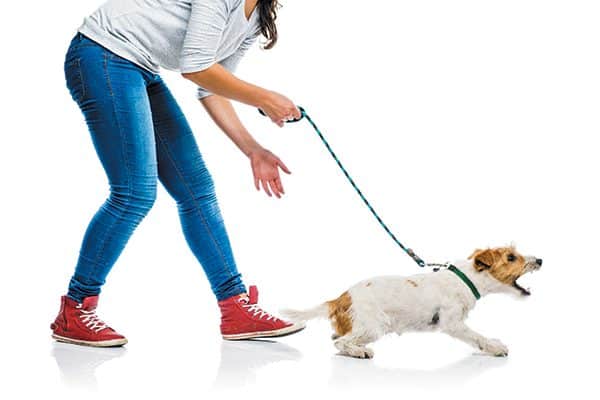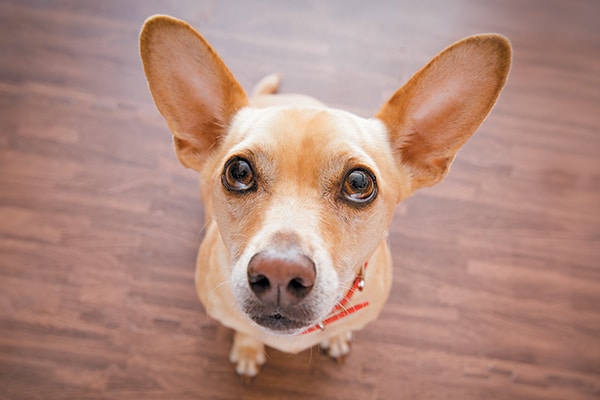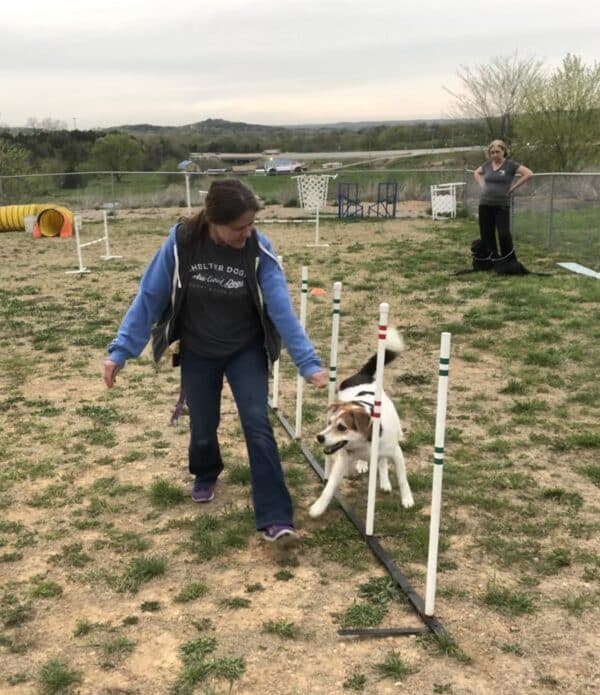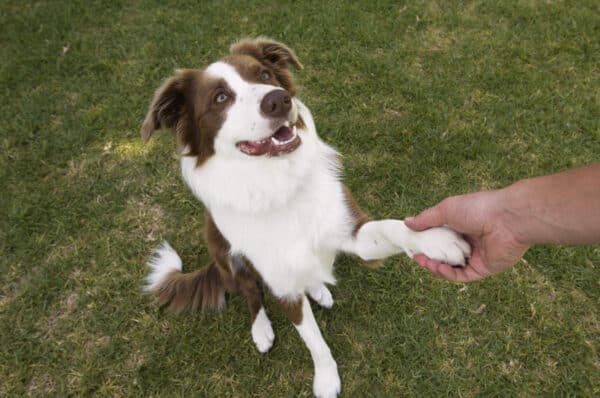We expect an enormous amount from our dogs. One area where we put too much pressure on them occurs when they meet new people — complete strangers to our dogs. Most of us want a polite human-style greeting, where the dog sits oh-so-politely while the nice human pets the dog on the head. Does that happen in your house? It doesn’t in most of my clients’ homes. Do you have a stranger-danger dog? Let’s look at this behavior and how to train your dog to act appropriately when visitors come to your house.
Reasons why a dog with a fear of strangers is one of the most pressing and common calls I get from dog parents:

- Dogs must be trained. They don’t arrive in our world understanding that we don’t want them to jump up and lick someone in the face to say hello. Dogs pair things in their environment. Most, if not all, dogs pair a knock on the door or the doorbell ringing with excitement or danger. Either way, a dog’s cortisol and adrenaline can kick into high gear when someone is at the door.
- Dogs aren’t taught a default sit. It would be great if on most occasions when the dog isn’t sure what to do, he offers a sit without the human saying: “Sit, Fido, sit, SIT, SIT!”
- Dogs usually have access to the front door (some with windows they can see out of) all day. Most dogs could easily be stressed by a bang on the door when they are home alone. If you went on an ordering spree on Amazon, and the UPS man comes by your house five days in a row delivering your bounty, you can end up with a dog who lives on high alert regarding any door activity.
- Owners punish a dog for jumping, often with a knee to the dog’s chest or by yelling at him. This tends to backfire and serves only to add additional energy and stress to the situation.
Can-do tips for a stranger-danger dog:
How do we guide our dogs into more desired behavior around strangers?
1. Teach a default sit.
Every time you catch your dog offering you a sit well away from the front door, praise him and give him a treat. Reinforced behavior is the most likely behavior to be repeated. Reinforce the sit (the one that your dog offers you, not the sit where you stand above him and scream at him to sit) first when the environment is calm. Work your way up to luring him to sit when life is a little more exciting.
2. Focus on the desired behavior.
…Versus yelling or hitting a dog (I never advocate either!) for a behavior you don’t want. By encouraging a sit in all situations and reinforcing that sit, you take away other options from the dog, such as jumping up at a new person’s face.
3. Pair a door with calmness.
Practice knocking on the inside of your front door with great treats on you. Knock once and as the dog is on his way to investigate, you can ask for a sit (better still is when the dog starts offering you that coveted default sit when he hears something at the door).
Once your dog is in a sit, that’s the behavior you reinforce. Work up to having someone working with you on the other side of the door who will knock or ring the doorbell. Go slowly and don’t rush the training. If the dog loses control, slow things down. Reinforce what you do want, and the unwanted behavior will fade away.
The doorway is an exciting place to a dog. It leads to the outside world where fabulous events like walks happen. It contains new smells and sights, and it’s super fun for most dogs to go out that door. We just need to give them better guidance on how to greet guests standing in that exciting doorway. Reinforcing the behavior we want is a win-win solution for both species.
Read more about dogs reacting to guests on Dogster.com:
- Is Your Dog Embarrassing in Front of Guests? Expert Advice
- Is Your Dog Jumping on Guests? How to Train Him to Stop
- 5 Dog Breeds That Are Good with Holiday Guests
Annie Phenix, CPDT-KA, is a professional dog trainer based in Utah. She is a force-free trainer specializing in working with troubled dogs. She is the author of The Midnight Dog Walkers: Positive Training and Practical Advice for Living with Reactive and Aggressive Dogs. For more information, visit phenixdogs.com.
Featured Image Credit: damedeeso | Thinkstock.





